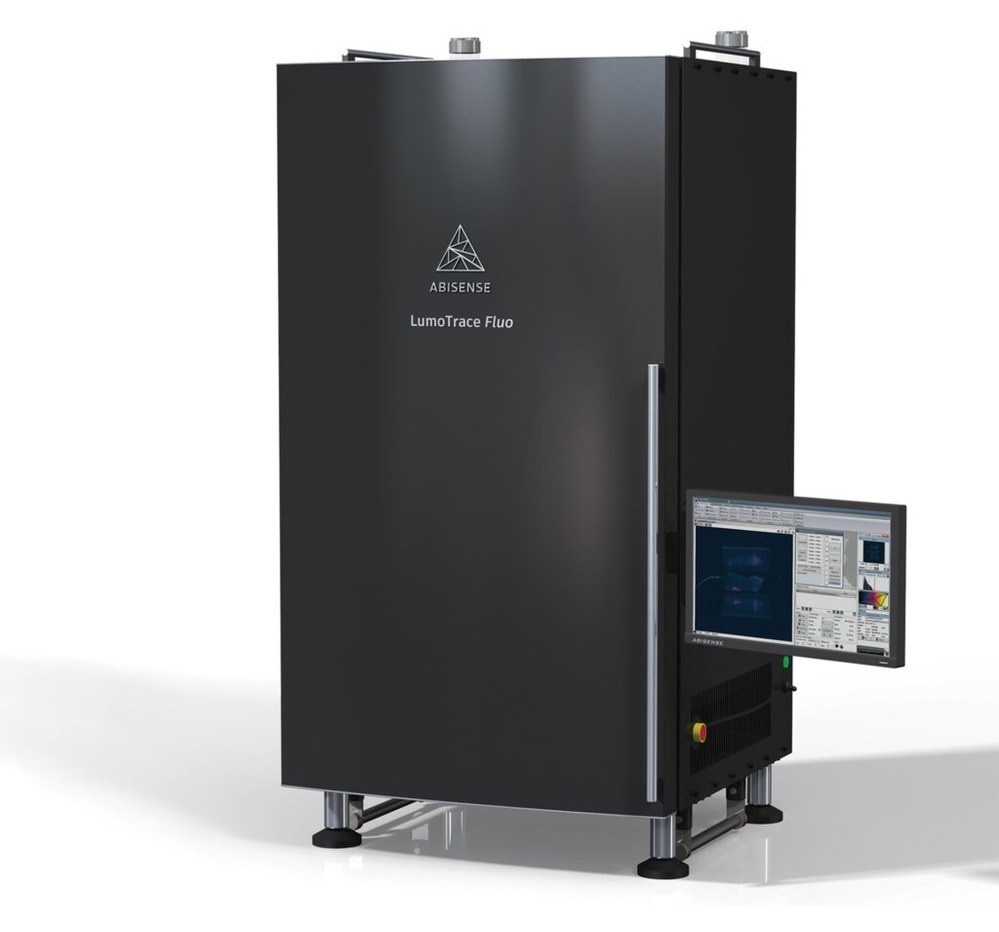Catalog
Metrology
525 products
View:
- Selected: 0Areas of use
- Selected: 0Item names
- Selected: 0Manufacturer
- Selected: 0Made in
- Selected: 0Additional
View:
525 products
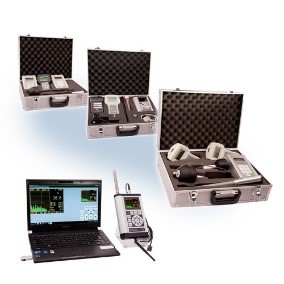
Laboratory of measurement of physical factors (FF) for certifying organizations (SOUT and production control)
According to the numerous wishes of our clients, the marketing and sales department of NTM-Zashchita LLC has formed an optimal Laboratory for measuring physical factors for certifying organizations.
NMT-ZASHCHITA
Moscow
Produced in: Moscow
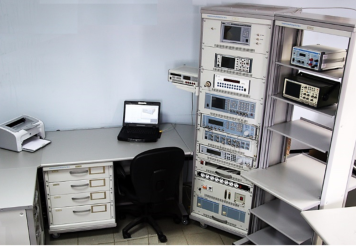
Verification module PM-3
The composition of the PM-3 verification module:
Frequency comparator CHK7-1011;
Universal frequency meter Ch3-86A;
Universal voltmeter V7-79;
Absorbed power wattmeter M3-108-2;
High-frequency signal generator G4-229;
High-frequency signal generator G4-230;
Generator of test pulses G9-1A;
Oscilloscope S1-177;
DC power supply B5-79/1;
Electronic switchboard of RF signals;
AC power source B2-7 (2 pcs.);
PC, printer;
Basic load-bearing structures (BNC).
Technical specifications
Measurement ranges of time-frequency parameters of signals:
Continuous oscillation frequency from 0.005 Hz to 17.85 GHz
Pulse repetition rate from 0.01 Hz to 100 MHz
The carrier frequency of the IM signal is from 100 MHz to 17.85 GHz
Pulse duration from 10 ns to 1000 s
Time interval from 0 to 1000 s
Nominal values of the frequency of the studied signals are 2,048; 5,0; 10,0; 10,24 MHz
Measurement errors of time-frequency parameters of signals:
Frequency of continuous oscillations ± (2,4·10-10 - 4·10-3)
Pulse repetition rate ± (2·10-7 - 2·10-3)
The carrier frequency of the IM signal is ± 2·10-7
Pulse duration ± (1 - 200) ns
Time interval ± (1 - 200) ns
The relative deviation of the frequency of the studied signal from the reference frequency ± (5·10-13 - 2·10-12)
Frequency of continuous oscillations ± (3·10-11 – 1,1·10-5)
Pulse repetition rate ± (2·10-11 – 6·10-5)
Carrier frequency of the IM signal ± (3·10-11 – 1,1·10-5)
Pulse duration ± (1·10-8 – 7,2·10-4)
Time interval ± (2·10-10 – 7,2·10-4)
Nominal values of the reference signal frequency ± (2·10-11 – 2,4·10-10)
General technical characteristics:
The area occupied by the module is 8-12 m2
Weight, not more than 327 kg
Power supply voltage from 198 to 242 V frequency (50 ± 0.5) Hz
Power consumption, no more than 2400 VA
TEKHNOYAKS
Moscow
Produced in: Moscow

SPECTROMETERS MKS‑AT6101S, MKS‑AT6101SM
The best one in its class
20 hours of continuous operation
Automatic simultaneous gamma-neutron radiation scanning with identification of radionuclides
Permanent recording of GPS-linked scan data for subsequent analysis
The possibility of expanding the measurement range of the ambient dose equivalent power to 10 Sv/h
Software application "GARM" for expert data processing and analysis and radiation mapping
The possibility of placing the spectrometer in a shockproof case (on request).
Atomtekh
Minsk
Produced in: Belarus, Minsk
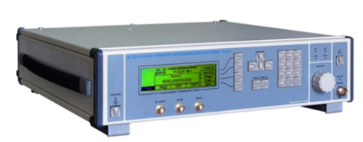
High-frequency signal generator G4-227
The generator is capable of operating both independently and as part of automated measuring systems with USB and IEEE-488 (CPC) interfaces.
Technical specifications
Frequency range from 9 kHz to 6 GHz
Frequency tuning discreteness of 1 Hz
The main error of the frequency setting is ± 3x10-7 Hz
The range of setting the output signal power level at the main output is from minus 10 to 13 dBm
The basic error of setting the reference power level is ± (0.5 – 1.0) dB
Instability of the output signal power level for any 15-minute time interval of no more than 0.1 dB
Metrological characteristics of the generator in the FM operation mode:
- frequency range of the modulating signal from 1 to 100 kHz
- frequency deviation setting range (taking into account the carrier frequency value) from 12.5 to 4000 kHz
- the main error of the frequency deviation setting is ± (20 – 25)%
Metrological characteristics of the generator in AM operation mode:
- frequency range of the modulating signal from 0.05 to 5.0 kHz
- the range of setting the amplitude modulation coefficient from 1 to 100 %
- the basic error of setting the amplitude modulation coefficient ± (0.25 M + 0.2)%
Metrological characteristics of the generator in the IM operation mode:
- the duration range of modulating pulses from 300 ns to 20 s
- the range of the modulating pulse repetition period from 340 ns to 30 s
- the difference in the duration of the output RF pulses from the duration of the modulating pulses ± 200 ns
Operating temperature range from minus 10 to 40 °C
AC power supply 220 V, 50 Hz
Power consumption, not more than 100 VA
Overall dimensions, mm 498x136x487
Weight, not more than 13 kg
TEKHNOYAKS
Moscow
Produced in: Moscow
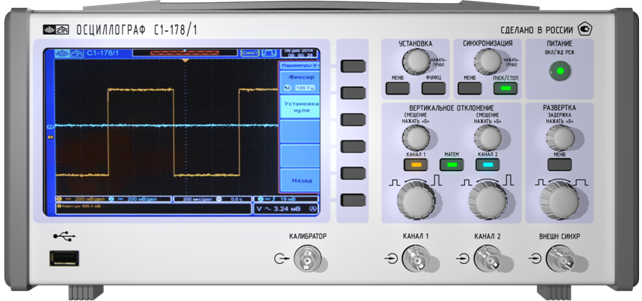

X-RAY DOSIMETER DKR‑AT1103M
A unique highly sensitive device for monitoring dose loads on the lens, mucous membranes and skin
Spectrum display mode when connected to a PC
It is not intended for measuring the natural radiation background
Atomtekh
Minsk
Produced in: Belarus, Minsk

Frequency comparator CHK7-1012
The comparator CHK7-1012 has a communication interface with an external personal computer USB 2.0 and application software for an external PC.
At the request of the customer, the comparator can be supplied complete with a laptop or tablet computer with installed software.
Ruknar
Nizhny Novgorod
Produced in: Nizhny Novgorod

High-temperature smart surface probe L=500 mm SZPVV.500P with built-in flash memory
from
16 284 ₽
High-temperature smart surface probe L=500 mm SZPVV. 500P with built-in flash memory is designed to measure the temperature of various materials by direct contact of the probe with the measuring object and transmitting the measured value via Bluetooth to devices with the ThermoMonitor, Android program installed.
Operating conditions of the SZPVV smart probe.500P
Ambient temperature, °C: -20...+55.
Relative humidity, %: not more than 80 at T=35 °C.
Atmospheric pressure, kPa: 86...106.
Functionality of the SZPVV smart probe.500P
Measurement of physical quantities with a resolution of 0.01.
Recording of measured values at intervals from 5 seconds to 23 hours 59 minutes 59 seconds (only smart probes with built-in memory).
Transmitting data about measured physical quantities via Bluetooth to a device with the ThermoMonitor, Android program installed.
Transmitting information about the state of charge of the built-in battery via Bluetooth to a device with the ThermoMonitor, Android program installed.
Automatic transition to sleep mode after 50 seconds.
The ability to connect external power.
Possibility of calibration.
TEKHNO-AS
Kolomna
Produced in: Kolomna, Moscow region
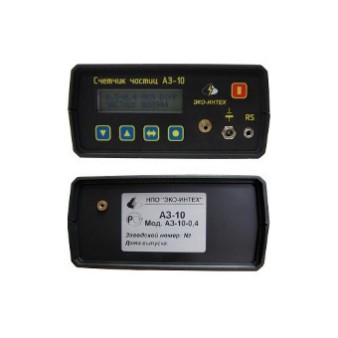
Particle counter AZ-10
from
253 400 ₽
The measuring device AZ-10 is designed to control the dustiness of special industrial premises, and can also be used to check filtering devices
NMT-ZASHCHITA
Moscow
Produced in: Moscow
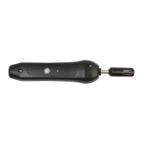
Smart atmospheric pressure probe
from
9 108 ₽
Designed to measure the temperature of gaseous materials without mechanical impurities and aggressive vapors, atmospheric pressure.
The smart atmospheric pressure probe is designed to measure the temperature of gaseous materials without mechanical impurities and aggressive vapors, atmospheric pressure by direct contact of the probe with the measuring object and transmitting the measured value via Bluetooth to devices with the installed ThermoMonitorbased on the Android program.
Operating conditions of the SZDA smart probe
Ambient temperature, °C: -20...+55.
Relative humidity, %: not more than 80 at T=35 °C.
Atmospheric pressure, kPa: 86...106.
Functionality of the SZDA smart probe
Measurement of physical quantities with a resolution of 0.01.
Recording of measured values at intervals from 5 seconds to 23 hours 59 minutes 59 seconds (only smart probes with built-in memory).
Transmitting data about measured physical quantities via Bluetooth to a device with the ThermoMonitor. The Android program is installed.
Transmitting information about the state of charge of the built-in battery via Bluetooth to a device with the ThermoMonitor. The Android program is installed.
Automatic transition to sleep mode after 50 seconds.
The ability to connect external power.
Possibility of calibration.
TEKHNO-AS
Kolomna
Produced in: Kolomna, Moscow region
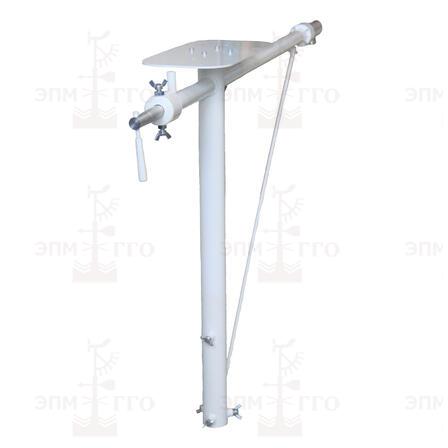
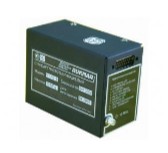
Rubidium frequency standard H1-1012
The Ch1-1012 frequency standard is designed for mobile applications with high requirements for dimensions, weight and power consumption as an embedded signal source of high stability in frequency measuring devices and complexes, telecommunication systems, navigation and communication systems.
This device can serve as a promising substitute for quartz generators in the development of high-resolution equipment, where the accuracy characteristics of a quartz generator are no longer sufficient.
Ruknar
Nizhny Novgorod
Produced in: Nizhny Novgorod
